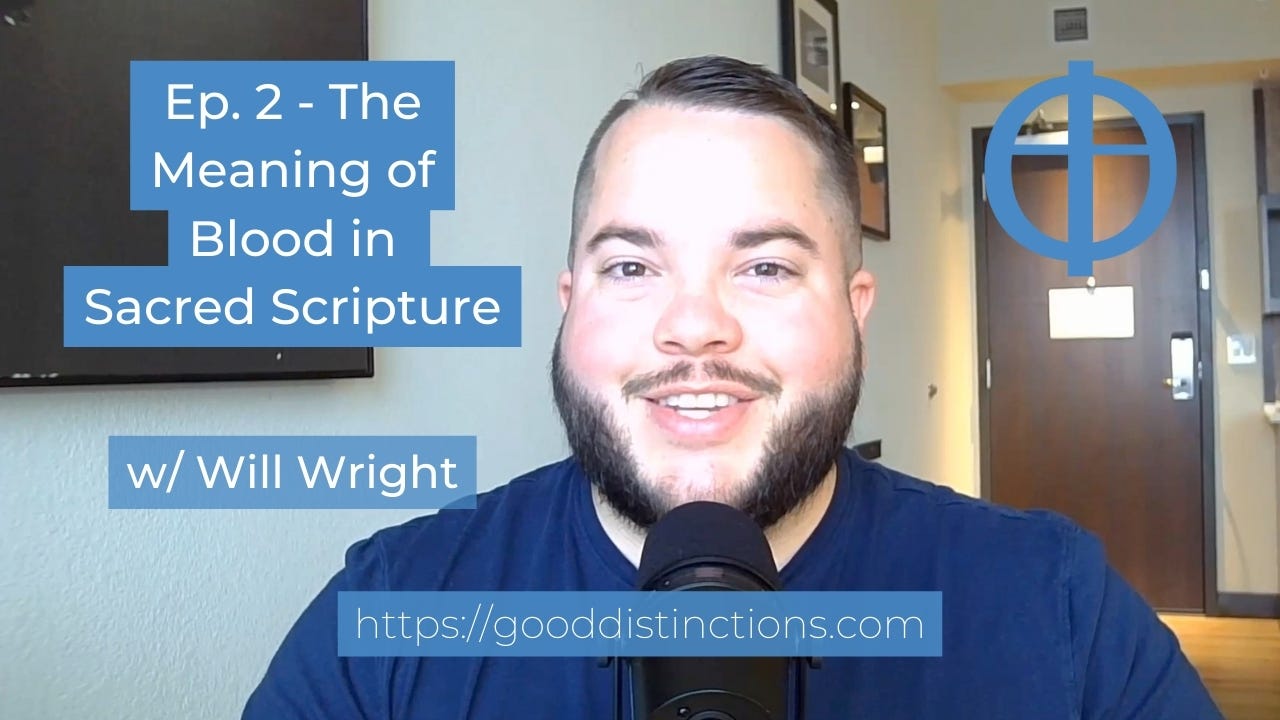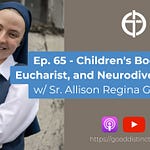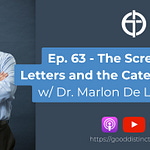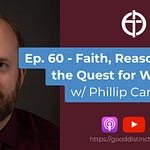Introduction
Each person has a slightly different perspective, even if the truth remains the same. The reality of the object under observation does not change because someone is viewing it. Instead, we just see it differently. This can result from different individual experiences, genetic predispositions, cultural or religious backgrounds, and even the context of a given moment. Sometimes, making good distinctions is finding the both/and that characterizes the Catholic approach rather than a sterile either/or approach.
Most words have one particular meaning, but there are some words which are packed with multiple meanings. Words which hold the most versatility of meaning are those things that are most fundamental to human existence: water, fire, and the sun. Water is life-giving but it can cause us to drown. Fire gives warmth and cooks our food, but it can easily kill us as well. One of the most vital substances in our life is blood. That is what I want to investigate today, especially the symbolic meaning of blood in Sacred Scripture.
What is the symbolic meaning of blood? Oftentimes, when we hear the word blood, a few different things might come to mind. One of the first things I think about is vampires, horror movies, and Halloween. A medical professional might immediately think of life and a healthy circulatory system. Most of the time when we see blood, it is associated with injury, bleeding, and the resulting pain, trauma, and potentially medical procedures. Or maybe human blood did not even come to mind, maybe you pictured a nice, juicy ribeye steak.
Whatever the case may be, blood is vital to our being alive. But seeing it outside of our body’s is an indication that something is seriously wrong. The imagery and symbolism of blood in the Bible is no less complicated and really interesting to investigate.
Old Testament
Cain and Abel - Innocent Blood Crying Out to God
In the fourth Chapter of the Book of Genesis, after the Fall of man, we the sons of Adam: Cain and Abel. Abel is a shepherd and Cain works the ground. God was pleased with Abel’s offering but not with Cain’s. The response of Cain was anger and God offered him a warning: “...if you do not do well, sin is crouching at the door. Its desire is contrary to you, but you must rule over it (Gen. 4:7).”
Cain, in anger and jealousy, committed the first murder. The unity of the family of man was shattered. Not only was it murder, it was fratricide.
“Then the Lord said to Cain, ‘Where is Abel your brother?’ He said, ‘I do not know; am I my brother's keeper?’ And the Lord said, ‘What have you done? The voice of your brother's blood is crying to me from the ground. And now you are cursed from the ground, which has opened its mouth to receive your brother's blood from your hand. When you work the ground, it shall no longer yield to you its strength. You shall be a fugitive and a wanderer on the earth (Gen. 4:9-12).’”
We know from the first two chapters of Genesis that God created man in His image and likeness, and we know that He breathed life into the first man. Human life is precious to God. The shedding of innocent human blood, by Cain, is an abomination. The voice of Abel’s blood, the Lord says, is crying out to Him from the ground. This is an odd thing to say. Blood does not usually cry out. God is highlighting that innocent human life and the bodily integrity of that innocent person is important to Him. The shedding of innocent blood cries out for justice.
The innocent blood of Abel has even cursed the ground, by Cain’s hand. Cain is a worker of the ground and now it bears him nothing, and it is all his doing. Thus, we see the devastating effects of sin. Even once forgiven, some sins, like murder, can never be put right. Though God does not destroy Cain, He rightly demands restitution and even dishes out divine punishment in justice. So far, we see that blood is life and innocent life belongs untouched. Further, when innocent blood is spilled, there are catastrophic consequences.
Exodus - the Nile Turning to Blood
During the ten plagues of the Lord against Pharaoh in the Book of Exodus and the false Egyptian deities, He turns the Nile River to blood. Pharaoh, yet again, did not let the Israelites go out into the desert to worship God. Like the murder of Abel by his brother Cain, this direct refusal to obey God demands justice and retribution. God demonstrates his power over nature and his power over the Egyptian god Hapi who the Egyptians believed to bring fertility to the land with the annual flooding of the Nile.
Just as blood is necessary in the human body, water is necessary in the veins of Egypt to sustain and irrigate the crops. By turning the Nile to blood, fish died, the water was non-potable, and the economy of the region took a severe hit. It is interesting that blood, which is so necessary for life, was the cause of so much death and chaos. Though blood in the Nile was death for the Egyptians, it was eventually life and freedom for the Israelites.
Exodus - the Blood of the Passover Lamb
This dual symbolism of blood, of life and death, is exceptionally prominent in the Passover. The Israelites are in bondage to the Egyptians and over the course of nine plagues, Pharaoh refused to let God’s People go into the wilderness to worship Him. In the tenth and final plague, God took the lives of every firstborn in the land. The way that Angel of Death would know to “pass over” the homes of the Israelites, and thus spare the firstborn, was to sacrifice a lamb and mark their doorposts with its blood. The next day, they hastily departed from Egypt and were freed.
In the Passover, we see the blood of the lamb preserving the Israelites from death. Some time later, we see the Blood of Jesus, the Lamb of God, preserving those in covenant with Him from eternal death. By the death of this sacrificial lamb, the People of God were granted life. Not only were they preserved from life, but the blood of the lamb allowed them to enter into a new life of freedom.
The Old Law and Animal Sacrifice
In the Old Covenant, animals were offered as sacrifices, first on makeshift altars, then the Tabernacle in the wilderness, and then later in the Temple in Jerusalem. The animal was slaughtered in a particular, ritualistic way and the blood of the animal was offered on the altar. Then, the remaining portions of the animal were consumed. Though, as I mentioned, the blood of animals could not be eaten.
We read in Genesis 9:4: “But you shall not eat flesh with its life, that is, its blood (Gen. 9:4)” and in Leviticus 17:14:
“For the life of every creature is its blood: its blood is its life. Therefore I have said to the people of Israel, You shall not eat the blood of any creature, for the life of every creature is its blood. Whoever eats it shall be cut off (Lev. 17:14).”
This understanding of blood being life does not only apply to animals. The name of Adam, the first man, is derived from two Hebrew words: dam and adamah. Adamah means earth or ground, because God formed him from the dust of the ground. The second word dam means “blood” because he is not a clay sculpture; he is a living man, who has blood coursing through his veins.
Since the first man, blood has been integral to the covenants of God. The covenant with Adam was made in his being given life, by God mixing blood and earth. The covenant with Abraham required animal sacrifice and thus blood was spilled. Further, the sign of the covenant with Abraham was circumcision. The Noahic Covenant likewise has a connection to blood and animal sacrifice. When Noah and his family emerged from the Ark, they took some of every clean animal and bird and offered them upon the altar. We have already spoken on some elements of the Mosaic Covenant. The final Old Covenant is the covenant with David.
Under David, animal sacrifice continued, but we see a different connection with blood. In this case, the covenant with David refers to establishing his kingdom forever, through his bloodline. The ancient Jewish understanding of bloodlines is quite potent, in no small part because of the division of the twelve tribes of the sons of Jacob.
Sprinkling Blood on the Congregation
Before we move on to the New Covenant, I want to look at one more event that might be peculiar to modern sensibilities. When Moses delivered the Law to the People, they said to him: “All the words that the Lord has spoken we will do (Ex. 24:3).” After this, he wrote down all the words of the Lord and got up early to build an altar. He sent off young men of Israel to offer burnt offerings and sacrifice animals to God. Then, he gathered half of the blood and put it in basins and half of the blood was thrown against the altar.
After this, Moses read the Ten Commandments and the entire Mosaic Law and then he took the blood and threw it on the people! That is not normal and not something that had been done before. So, what is Moses doing? Well, blood is life. This was the confirming of the covenant of Moses between God and His People. Moses said to the people: “Behold the blood of the covenant that the Lord has made with you in accordance with all these words (Ex. 24:8).” Covenants are more than mere earthly promises because they are based on the steadfast love and fidelity of Almighty God. A covenant made in blood is unbreakable, especially when God is involved.
The New Testament
Blood of the New Covenant - the New Passover
Now is a good time to move on to the New Covenant. At the Last Supper, Jesus says that He is establishing a new and everlasting Covenant in His Blood. When blessing the cup of wine, Jesus said: “This cup that is poured out for you is the new covenant in my blood. But behold, the hand of him who betrays me is with me on the table (Lk. 22:20-21).” And, of course, Jesus knew what was coming imminently.
In Catholic understanding, the Last Supper is not just some ritual, it is intimately and metaphysically connected with the Passion, Death, and Resurrection of Jesus. So, the cup which Jesus gave to His Apostles on the night before He was to suffer was not a metaphor. Outside of space and time, Jesus held in His holy and venerable Hands His own Blood shed on the Cross for the salvation of man. There is a lot more to say here, but if you want to learn more about the Holy Mass and this subject, in particular, check out Praying the Mass in the back catalog, especially sessions 4 and 5.
Of course the Blood of the Lamb of God, Jesus, is a New Passover. By being covered by the Blood of the Lamb through Baptism, we enter into a covenant relationship with God. We are marked for eternal life and as long as we remain in Christ and He in us, everlasting death will not touch us.
Blood and Water Pouring from the Side of Christ
The Holy Blood of the God-man is far more precious than anything that came before. If the blood of Abel cried out from the ground for justice, imagine the crying out from the ground of the innocent Blood of the Son of God! Jesus, unlike Abel, went to His death willingly. So, the justice in Christ’s Cross is that His love and mercy be fulfilled and sinful man would be redeemed.
When Jesus breathed His last, the centurion at the foot of the Cross, traditionally known as St. Longinus, thrust his spear into the side of Christ. In a moment which is miraculous and beautiful, blood and water flowed. The life-giving Blood of Jesus Christ, shed on the Cross, began the restoration of all of Creation. In the water, we see the Sacrament of Baptism. In the Blood, we see the Holy Eucharist. By these great Sacraments, we are reconciled with Almighty God. In Baptism, we die with Him and rise with Him; in a real sense, His Blood washes us clean. In the Holy Eucharist, we bring the Body and Blood of Jesus into our own body and soul. Our blood mixes with His.
The Blood of the Martyrs
The word martyrs means witnesses in Greek. The tradition of the Church, there is white martyrdom and red martyrdom. White martyrdom is where a person lives their life as a shining witness to Christ and the Gospel. Red martyrdom is called this because of the blood of the martyrs being shed. Out of love of Christ, the martyrs face death rather than renounce Christ. Their lives and the shedding of their blood become a testament to their convictions and God’s grace.
In the Book of Revelation chapter 16, the bowls of wrath are being poured out by seven angels in the vision of St. John. Many of these plagues mirror the plagues of the Exodus. The third angel poured out his bowl into the rivers and they became blood, exactly like the Nile turning to blood. St. John records the angel saying:
“Just are you, O Holy One, who is and who was, for you brought these judgments. For they have shed the blood of the saints and prophets, and you have given them blood to drink. It is what they deserve! (Rev. 16:5-6)”
In God’s justice, those who spill innocent blood earn just judgment, just like Cain for killing his brother Abel. But God is teaching us that His justice always triumphs. In the Cross of Jesus, we know that His justice is accompanied by love and mercy. But what do the saints and prophets merit by the shedding of their blood for the love of God? They receive eternal life in Heaven with God forever! And what is more, the Church benefits from their martyrdom in torrents of grace.
The ecclesial writer Tertullian is often quoted as saying, “The blood of the martyrs is the seed of the Church.” But this quote cannot be sourced effectively. What he says in Apologeticus in Latin is “Plures efficimur, quotiens metimur a vobis: semen est sanguis Christianorum” which more literally translated it: “When you reap us, we multiply. The blood of Christians is seed.” Both phrases show that when Christians are killed for love of Jesus, the Church abounds in grace all the more. But I love this detail of the more literal translation: “when you reap us, we multiply.” God does not desire the death of the innocent, as we saw with Cain and Abel. But He does allow it and He brings a greater good from it. When we are reaped by God, the chaff of our sinfulness falls away and the grain is all that remains. We enter Heaven in the triumph of Christ’s Cross. All you holy men and women martyrs for Jesus, pray for us!
The Both/And, Meaning, and Good Distinctions
I hope that this little walk through Sacred Scripture has been interesting. It certainly was for me when putting it together! What God has revealed to us is so marvelous. He writes straight with crooked lines over the course of millenia. He is so immensely practical, as well. God knows that we are body and soul, and so he uses symbols like blood to communicate His perfect love, gratuitous mercy, and steadfast justice to us.
But I hope that this conversation about the many meanings of blood shows us that the both/and approach is far more fruitful than a limiting either/or approach. Words have meaning, regardless of what modern society and academia say. But that does not preclude words from having layers of true meaning. It is good to apply this lesson about the multiplicity of meaning to other topics, as they arise.
So, next time you are talking to someone and they say, “No, no. That only means this!” And you start getting frustrated and you start “seeing red,” think about your blood pressure which is probably rising, take a deep breath, and make some good distinctions!












